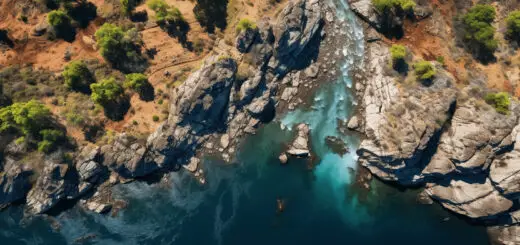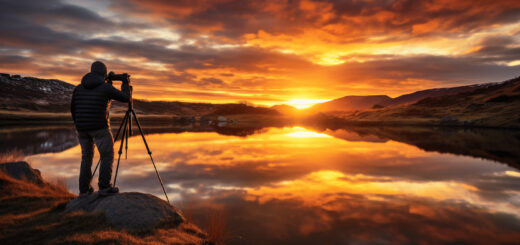Blending Art and Technology: Camera Reviews on Photography Tours
In a world saturated with stunning visuals, photography has become an essential tool for capturing and sharing our most cherished moments. Whether you’re a seasoned professional or an enthusiastic amateur, having the right camera equipment can make all the difference in capturing those truly breathtaking shots. But with so many options available, how do you choose the perfect camera for your needs? That’s where camera reviews on photography tours come in.
A photography tour is not only a chance to explore new landscapes and cultures; it’s also an opportunity to test out different cameras and see how they perform in real-world conditions. By blending art and technology, these tours offer invaluable insights to photographers of all skill levels, helping them make informed decisions about their gear. So, let’s dive into the world of camera equipment and technology and discover why camera reviews on photography tours are a game-changer.
Camera Equipment and Technology
With the rapid advancement of technology, the world of photography is constantly evolving. Camera equipment has come a long way from the bulky film cameras of the past to the sleek and powerful digital cameras we have today. In this section, we will explore the latest camera technology and popular photography equipment that photographers rely on to capture their visions.
Latest Camera Technology
Photography technology is advancing at a rapid pace, with new innovations constantly being introduced to the market. Here are some of the latest camera technologies that are making waves:
- Mirrorless Cameras: Mirrorless cameras have gained immense popularity in recent years. These cameras eliminate the traditional mirror and optical viewfinder found in DSLR cameras, resulting in a more compact and lightweight design. Mirrorless cameras offer exceptional image quality, advanced autofocus systems, and the ability to shoot in silent mode, making them a favorite among both professionals and enthusiasts.
- High-Resolution Sensors: Camera sensors play a crucial role in capturing detailed and sharp images. Manufacturers are continuously pushing the boundaries by introducing cameras with higher resolution sensors. These sensors, often exceeding 40 megapixels, allow photographers to capture stunningly detailed images with rich colors and ample post-processing flexibility.
- In-Body Image Stabilization (IBIS): Image stabilization technology has come a long way, and now many cameras feature in-body image stabilization. IBIS compensates for camera shake, allowing photographers to capture sharp images even in challenging lighting conditions or when using long focal lengths without the need for a tripod.
- Advanced Autofocus Systems: The autofocus capabilities of modern cameras have become incredibly fast and accurate. Many cameras now feature advanced autofocus systems with a high number of autofocus points, eye-tracking technology, and real-time subject tracking. These advancements make it easier to capture sharp and well-focused images, particularly in fast-paced situations, such as sports or wildlife photography.
Popular Photography Equipment
In addition to advancements in camera technology, there are several essential photography equipment pieces that every photographer should consider adding to their arsenal. Here are some popular items that are widely used in the industry:
- Lenses: The lens is just as important as the camera itself when it comes to capturing stunning photographs. Different lenses offer various focal lengths and allow photographers to achieve different perspectives and effects. Some commonly used lenses include wide-angle lenses for landscapes, telephoto lenses for wildlife and sports, and prime lenses for portraits.
- Tripods: Tripods provide stability and can be immensely helpful when shooting in low light conditions, capturing long exposures, or doing macro photography. They ensure that the camera remains still, resulting in sharp and blur-free images.
- Filters: Filters are essential accessories that can have a significant impact on the final image. They can help control light, enhance colors, reduce glare, or create unique effects. Some commonly used filters include polarizing filters, neutral density filters, and graduated filters.
- Memory Cards: Memory cards are crucial for storing your photographs. It’s essential to invest in high-quality and reliable memory cards with enough storage capacity to ensure you never miss a shot.
- Camera Bags: A good camera bag is essential for protecting your gear while on the move. Look for bags that offer ample storage space, comfortable carrying options, and suitable protection against weather elements.
Remember, the best camera equipment and technology for you ultimately depends on your specific photography needs, preferences, and budget. Stay updated with the latest advancements in the field, test out different equipment, and choose what helps you capture the images you envision.
Photography Tours
Photography tours offer a unique and immersive way for photographers of all skill levels to explore a new destination and capture stunning images. Whether you’re a hobbyist looking to improve your skills or a professional seeking inspiration, embarking on a photography tour can be a rewarding and enriching experience. In this article, we will delve into the benefits of photography tours, compare guided and self-guided options, and provide essential tips to help you make the most of your photography tour adventure.
Benefits of Photography Tours
Photography tours come with a range of benefits that can enhance your photography skills and take your creativity to new heights. Here are some key advantages of joining a photography tour:
- Expert Guidance: One of the biggest advantages of photography tours is the access to expert guidance from professional photographers. These guides have in-depth knowledge of the destination, its unique photographic opportunities, and the best times and angles to capture stunning shots. They can provide valuable insights and tips to help you improve your technique and composition.
- Access to Hidden Gems: Photography tours often take you off the beaten path to lesser-known locations and hidden gems that regular tourists may overlook. This allows you to capture unique and awe-inspiring images that truly showcase the essence of the destination. The local expertise of tour guides can provide you with insider knowledge that you wouldn’t have access to on your own.
- Networking Opportunities: Photography tours bring together like-minded individuals who share a passion for photography. These tours provide a valuable opportunity to connect with fellow photographers, exchange ideas, and learn from one another’s experiences. The camaraderie and shared enthusiasm can add an extra layer of enjoyment to your tour.
- Tailored Itineraries: Photography tours are designed with photographers in mind, ensuring that you visit the best locations at the most opportune times for capturing exceptional images. The itineraries are carefully crafted to maximize the photographic potential of each destination, allowing you to focus on honing your skills and capturing stunning images without worrying about logistics and planning.
- Learning Opportunities: Photography tours often incorporate educational components such as workshops, post-processing sessions, and portfolio reviews. These learning opportunities provide valuable insights into various aspects of photography, from technical skills to artistic composition. You can gain new perspectives and learn from experienced photographers who are passionate about sharing their knowledge.
Guided vs. Self-Guided Photography Tours
When considering a photography tour, you have the choice between joining a guided tour or embarking on a self-guided adventure. Each option has its own merits, and the choice ultimately depends on your preferences and level of experience. Let’s compare the two:
| Guided Photography Tours | Self-Guided Photography Tours |
|---|---|
| Expert guidance from professional photographers | Independence and flexibility |
| Access to hidden locations and insider knowledge | Opportunity to explore at your own pace |
| Networking with fellow photographers | Freedom to customize your itinerary |
| Structured itineraries tailored for photography | Budget-friendly option for experienced photographers |
| Valuable learning opportunities | Requires self-research and planning |
Essential Tips for Photography Tours
To make the most of your photography tour, here are some essential tips to keep in mind:
- Research and Prepare: Familiarize yourself with the destination and the unique photographic opportunities it offers. Research the best times to visit, weather conditions, and local customs. Prepare the necessary gear and ensure it is in good working condition.
- Pack Light, Pack Right: Traveling with heavy and cumbersome photography equipment can hinder your mobility and limit your creative options. Prioritize lightweight gear that suits the specific requirements of your photography tour.
- Be Open to New Experiences: Embrace the unexpected and be open to exploring different genres of photography. A photography tour is an excellent opportunity to step out of your comfort zone and try new techniques and subjects.
- Interact with Locals: Engaging with the local community can add depth and authenticity to your photography. Respect local customs, seek permission when photographing people, and strive to capture the essence of the destination through its people and culture.
- Stay Patient and Observant: Photography is about capturing moments, and patience is key. Take your time to observe your surroundings, be mindful of composition, and wait for the perfect lighting or decisive moment to capture a memorable shot.
Photography tours offer a unique blend of exploration, learning, and creative expression. By joining a tour, you can elevate your photography skills, discover new destinations, and create a stunning portfolio of images that truly reflect your artistic vision. So pack your camera bag, embark on a photography tour, and let your creativity soar!
Importance of Reliable Photography Equipment on Tours
When embarking on a tour, whether it’s a stunning landscape excursion or an immersive cultural adventure, having reliable photography equipment is vital. Capturing the beauty and essence of these experiences through photographs allows us to relive those moments and share them with others. To ensure that each shot is just right, it’s crucial to invest in quality, dependable equipment that can withstand the demands of travel. Here are a few reasons why reliable photography equipment is essential for tours:
Consistency in Image Quality
Having reliable photography gear ensures consistency in image quality throughout your tour. When you encounter breathtaking landscapes or encounter unique cultural events, you want to capture them with the utmost clarity and precision. Reliable equipment helps you achieve consistent results, allowing for stunning and cohesive photographs that tell a story. When your gear can deliver consistent quality, you can focus on composing the perfect shot without worrying about technical issues.
Durability for Extended Use
Tours often involve extended periods of shooting, sometimes in challenging environments. Reliable photography equipment is built to withstand the rigors of travel and harsh conditions. Whether you’re hiking up a mountain, traversing through a dense forest, or navigating bustling city streets, durable gear ensures that it won’t let you down when you need it most. Investing in equipment that can withstand the demands of travel ensures that you won’t miss out on capturing any precious moments.
Dependability for Time-sensitive Shots
Some tour experiences present fleeting moments that require quick reflexes and fast camera settings. Whether it’s capturing a mesmerizing sunset, a wildlife sighting, or a split-second cultural event, reliable photography gear ensures that you can be ready at a moment’s notice. When your equipment is dependable, you can trust that it will perform flawlessly, allowing you to capture those once-in-a-lifetime shots without hesitation.
Confidence and Peace of Mind
Knowing that you have reliable equipment in your arsenal gives you the confidence and peace of mind to concentrate on your photographic vision. With dependable gear, you can focus on exploring your surroundings, interacting with the locals, and immersing yourself in the tour experience. There’s no need to worry about equipment failures or missed shots when you can trust your gear to perform consistently and flawlessly.
Investing in reliable photography equipment for your tours is a decision that will pay off in the long run. Capture the essence and beauty of your travel experiences with clarity and precision, knowing that your gear won’t let you down. So, before you embark on your next adventure, make sure to equip yourself with reliable photography equipment that will enable you to capture the magic of your tours.
Balancing Art and Technology in Photography
Introduction:
Photography is an art form that has been transformed by technology in recent years. With the advent of digital cameras and editing software, photographers now have more tools at their disposal than ever before. However, even with all these technological advancements, it is essential to strike a balance between art and technology in photography. By understanding the role of technology and the influence of artistic approach, photographers can create compelling images that resonate with viewers on a deeper level.
Role of Technology
In this digital age, technology plays a significant role in shaping the world of photography. Here are a few ways in which technology has impacted the field:
- Accessibility: The proliferation of smartphones with high-quality cameras has made photography more accessible to the masses. Almost everyone now has a camera in their pocket, allowing them to capture and share moments effortlessly.
- Ease of Use: Digital cameras have made it easier for photographers to experiment and learn. With instant feedback and the ability to retake shots, photographers can refine their skills without the need for costly film and processing.
- Post-Processing: Editing software like Adobe Photoshop and Lightroom have revolutionized the editing process. Photographers can now enhance their images, adjust colors and tones, and remove imperfections with a few clicks.
- Image Sharing: Social media platforms and online portfolios have provided photographers with a platform to showcase their work to a global audience instantly. This accessibility has allowed photographers to gain exposure and connect with potential clients and collaborators.
While technology has undoubtedly improved the photography experience, it is essential to remember that it is just a tool. It is up to the photographer to use technology in a way that enhances their artistic vision rather than relying on it to compensate for creative shortcomings.
The Influence of Artistic Approach
Technology may provide the tools, but it is the artistic approach that sets photographers apart and gives their work a unique voice. Here are a few ways in which artistic approach influences photography:
- Composition: Composition is a fundamental element of photography, and it is through this artistic skill that photographers create visually appealing and thought-provoking images. Composition involves the careful arrangement of elements within the frame, such as lines, shapes, colors, and textures.
- Storytelling: Artistic photographers have a knack for capturing moments and telling stories through their images. They use their camera as a storytelling tool, capturing emotions, relationships, and narratives that resonate with viewers.
- Creative Vision: Every photographer has their own unique style and vision. Artistic photographers use their creative instincts to bring their vision to life. They find inspiration in the world around them and translate it into captivating images that evoke emotions and spark imagination.
By balancing technology with artistic approach, photographers can achieve images that not only showcase technical excellence but also resonate with viewers on an emotional level. Instead of relying solely on the latest gear or editing techniques, photographers should focus on honing their artistic skills and capturing moments that evoke a sense of wonder and connection.
Conclusion:
In the ever-evolving landscape of photography, it is crucial for photographers to strike a balance between art and technology. Technology provides the tools and accessibility, but it is an artistic approach that truly brings a photograph to life. By understanding the role of technology and embracing their artistic vision, photographers can create compelling images that stand the test of time. So, let us embark on this journey of balancing art and technology in photography, where creativity meets innovation.
Conclusion
In conclusion, blending art and technology is essential in the world of photography. With the latest camera equipment and technology, photographers can capture stunning images and push the boundaries of their creativity. Photography tours offer unique opportunities to explore new locations and expand one’s skills, whether through guided or self-guided experiences. It is crucial to have reliable photography equipment on these tours to ensure that every moment is captured with precision. Balancing art and technology allows photographers to express their unique artistic approach while utilizing the tools and techniques provided by modern advancements. By embracing both artistry and technology, photographers can truly create captivating and impactful images. For more photography tips, tutorials, and reviews, visit Wimarys.com, where you’ll find a wealth of resources and inspiration for your photography journey.
Frequently Asked Questions
- What kind of camera should I bring on a photography tour?
The ideal camera for a photography tour depends on your skill level and preferences. However, a DSLR or mirrorless camera with manual controls and interchangeable lenses is typically recommended for capturing high-quality images and having more creative control over your shots.
- Are there specific camera brands that are better for photography tours?
There are several reputable camera brands that offer excellent options for photography tours, such as Canon, Nikon, Sony, and Fujifilm. It’s important to research and choose a camera model that fits your needs, budget, and desired features.
- What are the essential camera accessories to bring on a photography tour?
Some essential camera accessories for a photography tour include extra batteries, memory cards, a sturdy tripod, a variety of lenses (wide-angle, telephoto, etc.), lens filters, a camera bag for protection and easy carrying, and a cleaning kit for maintenance.
- Should I bring a backup camera on a photography tour?
It’s always a good idea to have a backup camera, especially on important photography tours or trips. If your primary camera malfunctions or gets damaged, having a backup camera ensures you can continue capturing photos without missing any crucial moments.
- Do I need advanced technical knowledge to use a professional camera on a photography tour?
While having some technical knowledge can be helpful when using a professional camera, it is not essential. Many photography tours cater to various skill levels, and professional guides or instructors can provide guidance and assistance with camera settings and techniques.


